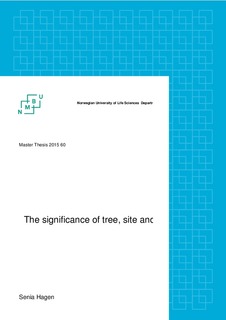| dc.description.abstract | Fragmentation of habitats is a great threat to biodiversity. An especially vulnerable species group is saproxylic beetles. Many of these are associated with hollow oaks, which provide a unique and stable habitat. The number of hollow oak trees in Norway has declined, resulting in hollow oaks being scattered in the landscape with varying degrees of isolation. How species associated with hollow oaks respond to fragmentation depends on their life history characteristics, two of which are a subject of this thesis, namely trophic level and specialization. I investigated what variables and scales had the greatest effect on four oak specialist beetles on different trophic levels. The same variables and scales were also used to understand why two pairs of closely related saproxylic beetles, one common and one rare had different occurrence frequencies on hollow oaks. Tree, site and landscape variables representing habitat size, isolation and climate were obtained though field registrations and from map sources. These variables were analyzed in GIS and used in stepwise multiple regression to create optimal models for each species. The results for the four oak specialists showed that the species dependent on wood (xylophage) and the species dependent on wood and fungi (xylomycetopage) responded to small-scale tree variables representing habitat size. The predator species and the species with mixed feeding preferences responded to large-scale landscape variables representing climate and isolation, respectively. The variables and scales did, to some degree contribute to the understanding of why two species within the same family occurred at different frequencies. For instance, both of the rare species responded to dead wood. Their dependence on this substrate could have made them vulnerable to habitat change and fragmentations, and in turn rare. | nb_NO |
